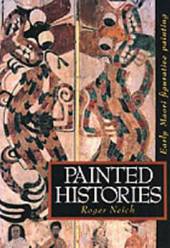
|
Painted Histories: Early Maori Figurative Painting
Paperback
Main Details
Description
This volume explores the flowering of figurative painting in the decoration of Maori meeting houses, especially in the east of the North Island, in the latter half of the 19th century. Not practised in traditional culture, figurative painting evolved as response to missionary criticism of Maori church decoration. Later, several distinctive figurative painting traditions developed, especially in association with Te Kooti and the Ringatu church. Decoration of the meeting house was transformed in many striking and beautiful ways to give visual expression to new tribal histories based on Ringatu teaching and the experience of land alienation. However, this creative period did not last and figurative painting was superceded in the early 20th century by a government-sponsored return to orthodox art forms. Neich analyzes the theory and practice of this art and describes the figurative painting of over 80 meeting houses.
Author Biography
Roger Neich is Curator of Ethnology at Auckland Museum. He has published widely on traditional Maori and Pacific art and is the author of Carved Histories (AUP, 2001) and co-author of Pacific Tapa (1997).
ReviewsThis seminal publication is important, not only for the historical insight it offers but also for the platform that it constructs for 'korero' across the cultural divide. --Robert Jahnke, Landfall
|